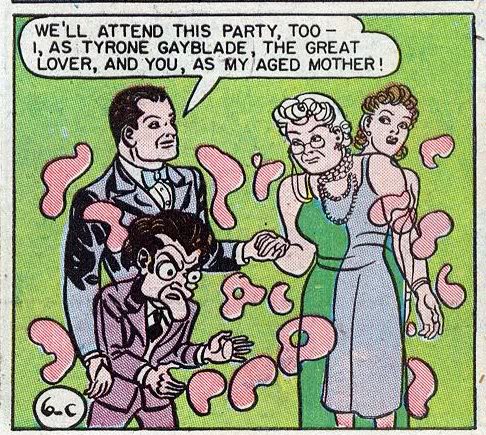At HU
I talk about the mundane blankness of Jason’s Low Moon
I review the autobiography of country great Charlie Louvin.
Ng Suat Tong on comics adaptations of Lovecraft.
Kailyn Kent on Jeff Gabel and gallery cartoonists.
Kurt Buseik on why why Batman is not Green Lantern.
Robert Stanley Martin on Tolstoy and heroes.
Richard Cook on the Smithsonian’s video games as art exhibit.
I talk about Roy Lichtenstein and the heartbreak of appropriaton.
An R&B, blues, and soul download mix.
Utilitarians Everywhere
At Slate I explain why Alan Moore is right to be pissed.
At Slate’s double X blog I talk about the first queer superhero not Alan Scott.
At Splice I talk about the surprisingly positive results of Obama’s support for gay marriage.
At Splice I’m disappointed with the new Squarepusher album.
&mbsp;
Other Links
Nice Tucker Carlson hit job by Alex Pareene.
The Reader with some quality snark in the direction of their new owners.
Jones on comics’ crappy coloring.
Charles Reece on Mad Men.
Nice Edie Fake cover.
The NYT on Anthony Heilbut’s great new book on (among other things) gospel and gayness in the black church.


“After his death in 1947, Elizabeth and Olive lived together for another three decades, until Olive passed away in the 1980s. There’s every reason to believe, then, that Marston was intimately acquainted with queer women.”
Curious: did Olive and Elizabeth have sexual relations, or were they more Mormon about the ménage à trois?
There’s no direct evidence. But given Marston’s intense lesbophilia, his insistence that basically half of all women were bisexual, and the fact that Olive and Elizabeth both worked with him on his psychological researches in which he talked about the normality and even ideal nature of lesbianism…well, I don’t think there can be a whole lot of doubt.
Oh…and of course Olive and Elizabeth lived together for three decades after Marston died….
So…no direct evidence, but massive amounts of circumstantial evidence, in other words.
I ask, because it doesn’t sound like it from this description:
When I was doing some research, I ran across that here, but it’s from Les Daniels’ book. Similarly, this brief bio of Elizabeth with comments from family members makes it sound like a loving arrangement, yes, but not a sexual relationship. For example,
Anyway, I don’t know that you should use his home life as evidence for reading lesbianism into WW.
Yes, I recently had the pleasure of having this discussion with others.
His kids make the relationship seem more Mormon. Everything Marston has ever written suggests the opposite. His kids haven’t talked about their parents’ bondage practices either, and yet.
In any case, I’m very comfortable pointing out that his homelife strongly suggests he was intimately familiar with lesbians. I think it’s pretty blindingly obvious.
Oh, and I’m not “reading” anything into WW. Marston explicitly talks about lesbianism as normal and idea throughout his work; he talks about the lasso as a metaphor for sexuality and then has WW lasso women all the time; he talks about the homosexual undertones (and overtones) of sorority rituals, and then has those sorority rituals obsessively referenced in his comics. There’s pretty much no way to see the lesbian subtext and, for that matter, text, as anything but intentional.
Well, I don’t have a problem with that reading (or a non-lesbian reading, for that matter), just with the use of his marriage arrangement to support it. Seems like you’re using his theories to read his marriage, then citing the marriage as support. Calling Olive and Elizabeth lesbians or “queer women” is a hypothesis at best.
It’s not an algorithm. It’s a matter of what we know and how that applies to other things we know. There’s a ton of evidence that Marston, Elizabth, and Olive, knew about and approved of lesbian relationships; we also know that they lived in a polyamorous household.
I didn’t present their queerness as fact. I presented it as a hypothesis with a ton of evidence to support it. I stand by that.